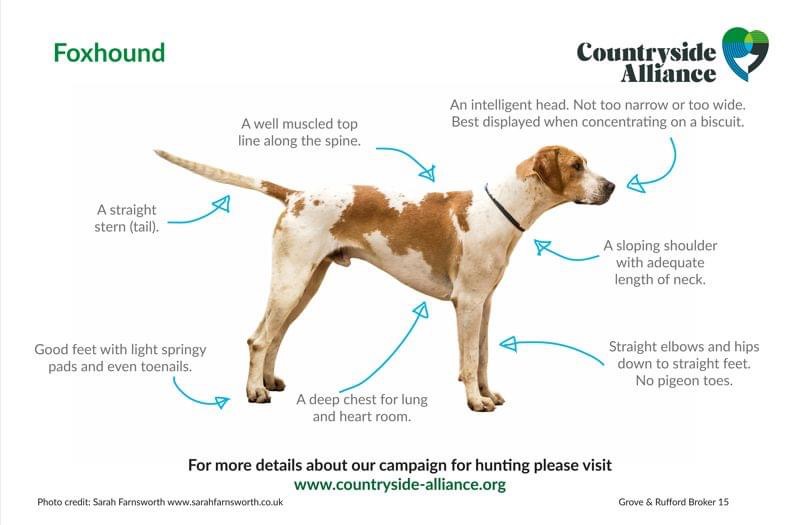Possibly one of the oldest native breeds in the UK, the Foxhound is classed as a vulnerable breed by The Royal Kennel Club. Since 1983, the RKC have had less than 900 Foxhounds registered. Thus meaning they are classed as a vulnerable breed.
However, there are thousands of Foxhounds in packs across the United Kingdom.
The English Foxhound is often deemed the rarest of the four foxhound breeds across the world. Originating in Great Britain during the 16th century the English Foxhounds were created to hunt deer in England, but they were superseded by the Deerhound and Staghound. During Henry VIII’s reign he decided to hunt exciting new quarry – the fox. Suddenly, the Foxhound found a renewed purpose.
Apparently created by crossing a Greyhound (for their speed), a Fox Terrier (for their hunting abilities), and a Bulldog (for their determination and stubbornness) the some foxhounds can still be traced back to these mixes!
As the name suggests, historically the Foxhound was bred and used for hunting foxes by scent across country. However, the Hunting Act 2004 changed this & now Foxhounds hunt artificial trails. Packs are regulated by the British Hound Sports Authority & are expected to meet the highest standard of care & welfare. With regular spot checks and compliance standards.
Within the BHSA sits Master Of Foxhounds Association who have ownership of the Studbook.
The MFHA studbook works differently to the KC registrations. Where by the KC register puppies at a few weeks old, the MFHA studbook allow registrations of hounds once they have “entered”. This means they have had their first season trail hunting. They also might “enter” at a hunt different to where it is bred if it has been drafted out.
The Kennel Club has a breed standard for the foxhound which is similar to that of MFHA. However there are several types of foxhound with in this bracket – similarly to other hounds such as Bassets & Dachshunds.
